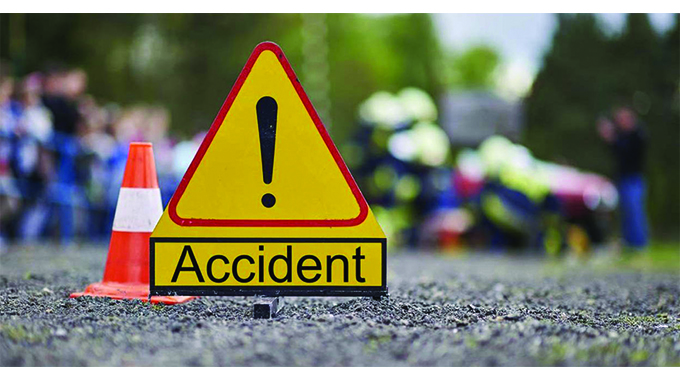How Covid-19 is spreading

Andile Tshuma/ Thandeka Moyo-Ndlovu, Chronicle Reporter
COVID-19 tests conducted in the country surpassed the 100 000 mark on Monday and 1 713 people had tested positive.
The 103 291 Covid-19 tests comprised of 61 351 (Rapid Diagnostic test) RDT and 41 940 (Polymerase Chain Reaction)
The positivity rate, calculated by dividing the total number of tests conducted by the number of positive results, for the combined PCR and RDT tests is one positive case in every 60 people tested.
One in every 35 people has tested positive for Covid-19 when using the RDT test while one in every 24 people has tested positive for Covid-19 when using the PCR figures.
The manifestation of Covid-19 has however been changing since the country recorded its first Covid-19 case on March 20.
Initially cases were mainly reported from individuals with a travel history.
After a few weeks, Covid-19 cases started being concentrated at quarantine centres accommodating returning residents mainly from South Africa, Botswana and Mozambique.
During the past few weeks, the country witnessed a dramatic change as it started recording an increase in local transmissions which were partly attributed to positive individuals escaping from quarantine centres and other people knowingly or unknowingly spreading the virus by not taking preventive measures such as self-isolation.
Workplaces, hospitals and prisons have become Covid-19 epicentres, a disturbing trend given that most victims at hospitals and prisons are the Covid-19 frontliners while productive workers at the different companies who are supposed to produce for the nation are under threat.
Bulawayo medical practitioner Dr Anele Bhebhe said an analysis of how Covid-19 has spread in the country shows that the virus had been handled well at the onset but the situation changed recently as contact tracing is now complicated.
“Initially we started on the right foot but people became lax as though we were now Covid-19 free hence the dramatic rise in cases recently. Preventive protocols stopped being followed because of fatigue. Most cases recorded during the first few days and weeks of the outbreak in March were associated with people who had travelled and as such locals felt safe. The pandemic’s manifestation has however been evolving and at one time the spike in cases was witnessed at quarantine centres where most of those testing positive were returnees. The situation has changed during the past few weeks as the country is now witnessing more local or community transmission compared to imported cases,” said Dr Bhebhe.
He urged people to be more vigilant as the virus was now prevalent at workplaces and institutions such as hospitals and prisons where people from different communities meet.
Dr Bhebhe who predicted an increase in cases in the next few weeks, said it was crucial for members of the public to strictly adhere to Covid-19 regulations meant to prevent the spread of the virus.
“It continues to evolve, now it is hitting institutions such as prisons and other workplaces including hospitals. There is a lot we are yet to see in terms of its evolution and its behaviour. We just need to be prepared and we must be on guard in order to stay safe,” said Dr Bhebhe.
He said the nation was lacking in a number of ways and there was urgent need to address the shortcomings in order to contain the pandemic.
“In Bulawayo, we are closer to the borders which are porous and people are coming in and out willy nilly and this should be addresssed. The water situation must also be addressed because Covid-19 needs the highest hygiene standards which require water. The transport system is chaotic, Zupco is not coping with demand and the queues there are breeding ground for mass infections,” said Dr Bhebhe.
Health authorities are saying Nkulumane and Magwegwe suburbs as well as Bulawayo Prison are the Covid-19 hardest hit areas in Bulawayo.
Bulawayo Director of Health Services Dr Edwin Sibanda said from the 525 cases that had been recorded in the city by yesterday, 490 of those cases were local transmissions.
He said 115 health workers, from both public and private institutions had tested Covid-19 positive in Bulawayo and 51 of them are student nurses and 37 are nurses.
Four are doctors, seven nurse aides, five general hands, three medical students and three administrative clerks.
The number also includes one health information officer, one environmental health practitioner, a community health nurse, a physiotherapist and one matron.
“What is more worrying actually is that of the 525 cases in Bulawayo, more than 100 are health workers and we have had nurses, doctors, environmental technicians and even clerical staff being infected by this Covid-19. We are lucky that none of them has required hospitalisation,” said Dr Sibanda.
He said the city was not in a position to deal with severe Covid-19 cases given that at least five percent of such cases require oxygen.
“If our situation had followed the international trends, 26 of these 525 Covid-19 positive individuals could have been hospitalised with some needing ventilation,” said Dr Sibanda.
He said what this would have meant is provision of 26 intensive care beds which the city does not have.
“This would have ben a catastrophe for the city of Bulawayo because we do not have such facilities to cater for such a big number of severe cases,” said Dr Sibanda.
He said it was important for residents to appreciate that the pandemic affects all age groups and therefore the onus was on all citizens to strictly adhere to regulations meant to prevent infection.
Mpilo Central Hospital acting chief executive officer Professor Solwayo Ngwenya said more people are making hospital visits.
“We have appealed to members of the public not to make unnecessary visits to the hospital but surprisingly they are still coming in large numbers. We sometimes have more visitors than patients at the hospital which is risky,” said Prof Ngwenya. -@thamamoe.









Comments